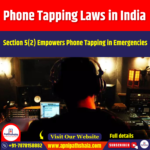GS Paper II – Role of Civil Services in a Democracy |
Why in the news?
Recently, the Central Government directed the Union Public Service Commission (UPSC) to withdraw the advertisement seeking lateral recruitment for senior basic posts.
Why Centre Drops Lateral Entry Plan
- The opposition criticized the policy because it did not provide for reservation for Scheduled Castes (SC), Scheduled Tribes (ST), and Other Backward Castes (OBC).
- Some NDA allies, such as Janata Dal (United) and Lok Janshakti Party (LJP) also opposed the move.
- Lateral entry in India has sparked controversy due to its exclusion of reservation requirements for SCs, STs, OBCs, and EWS, leading to accusations of undermining social justice and the Constitution.
- This has fueled concerns about increased casual and contractual recruitment, decreased posts for marginalized communities, and favoritism towards certain groups.
- The issue has further intensified with the recent controversy surrounding the recruitment of assistant teachers in Uttar Pradesh, adding to the broader debate on reservation policies.
About:
The procedure of right away assigning people from outside the government to mid-level and senior jobs is known as “lateral entry.”
It seeks to improve governance by bringing in new ideas and domain-specific knowledge.
These “lateral entrants” are hired with three-year contracts that can be extended for a maximum of five years.
Origin and Application:
The Second Administrative Reforms Commission (ARC), which was founded in 2005, firmly supported the notion of lateral entrance when it was originally presented under the 2004–09 law. Later, in 2017, NITI Aayog suggested bringing in knowledge and new viewpoints.
The induction of middle and senior management personnel in the central government was proposed by the Sectoral Group of Secretaries (SGoS) on Governance and NITI Aayog in their 3-year Action Agenda of 2017.
Eligibility:
Those with experience in the appropriate domains and domain knowledge from the commercial sector, state governments, autonomous bodies, or public sector initiatives are welcome to apply for these roles.
The selection criteria usually prioritise subject matter expertise and professional accomplishment.
Reservation in Lateral Entry:
The “13-point roster” guideline has prevented Lateral entries from being included in the reservation system.
A candidate’s placement on a list of job opportunities is determined by applying the “13-point roster” policy, which uses a fraction of one hundred to calculate the candidate’s group quota percentage (SC, ST, OBC, and EWS).
Since every lateral entry position is regarded as a “Single Post,” these appointments can be made without according to reservation standards because the reservation system does not apply to them.
For each department, 45 positions have been separately posted in the current recruitment round. Reservations would be in place, with special allocations for SC, ST, OBC, and EWS candidates if they were to be viewed as a single category.
Process of Lateral Entry Recruitment
- Selection process – by the Union Public Service Commission (UPSC).
- The UPSC is requested by the Department of Personnel and Training (DoPT) to handle the lateral entrance selection procedure.
- UPSC invites online applications
- Submission of application- the UPSC conducts interviews of the shortlisted candidates.
- Recommendation of the list of selected candidates to the DoPT.
- The government then appoints the suggested candidates, usually for a term of three to five years.
Recommendations of ARC on Lateral Entry scheme :
First Administrative Reforms Commission (ARC) (1966): It was founded with the goal of professionalizing and overhauling personnel management and training within the public services, and Morarji Desai served as its chairman.
Even while it did not openly support lateral entry, it set the stage for addressing the demand for specialized knowledge in the bureaucracy.
Second Administrative Reforms Commission (ARC) (2005): It suggested changes to increase the efficiency, openness, and citizen-friendliness of the Indian administrative system.
The ARC highlighted the necessity of lateral access into higher government positions in its 10th Report, as it can facilitate the introduction of specialized knowledge and abilities that may not always be found in regular civil services.
It suggested hiring experts from the business world, academic institutions, and government projects to build a talent pool for contract or temporary positions.
The ARC also emphasized integrating lateral entrants while maintaining public service integrity and suggested a transparent, merit-based selection process.
Need for Lateral Entry
- Shortage of officers: There is a shortage of 22.48% or 1,510 officers for IAS cadre: DoPT
There is a 2,418 officer deficit in the Indian Police Service (IPS) and the Indian Administrative Service (IAS).
Domain Expertise:
Domain expertise from the private sector can be brought into the central administration through lateral entry.
This can boost productivity and foster competition in the delivery of governance.
Pros of Lateral Entry :
- Specialized experience and Expertise: As governance grows more complicated, lateral entry enables the government to hire specialists with experience in fields like technology, management, and finance, filling in knowledge gaps that generalist civil servants might not have.
- Innovation and Reforms: By contributing their rich expertise from the private sector, non-governmental organizations, or other organizations, lateral recruiters can assist improve and changing administrative procedures and governance.
- Closing the Gap: Data from the Department of Personnel and Training indicate that there is a 1500 IAS officer shortage. Lateral entry may be useful in bridging this gap.
- Bringing about a Change in Work Culture: It will assist in changing the government sector’s work culture, which is criticized for its rule-book bureaucracy, status quo, and red tape.
- Active government: In the modern era, the government is evolving into a multi-actor, participatory endeavour. By means of lateral entry, stakeholders like non-profits and the corporate sector can get involved in the governance process.
Cons of Lateral Entry :
- Short Tenure: The three-year term that the Central government has established for joint secretaries is insufficient for newcomers to completely adjust to the intricate governance structures and make significant contributions.
- Preserving Objectivity and Neutrality: Including people from different backgrounds may make it more difficult to remain impartial and objective because of possible conflicts of interest and questions about impartiality, particularly if new hires have ties to interest groups or private businesses.
- Effect on the Morale of Permanent Officers: The growing number of lateral hires may cause a gulf between them and permanent staff members, which could be detrimental to career bureaucrats’ morale.
- Possible Dilution of Merit-Based Recruiting: The civil services’ foundational merit-based recruiting system may be weakened by lateral entry. It could give the impression that the selection process is biased or nepotistic if it is not carried out transparently.
- Outsider Syndrome: Because they are apprehensive about upsetting the status quo and causing chaos, traditional bureaucrats may be hostile to lateral entrants and see them as outsiders.
- Experience Requirement for Senior Positions: Under the permanent system, IAS officers who have served for 17 years—typically at an age of 45—are promoted to the joint secretary level, where they stay for 10 years.
The best prospects may be discouraged from joining if lateral entrants are subject to similar experience criteria since they often reach their professional zenith in the private sector at that age.
Lateral entry in other countries
- Several countries, including the US, UK, Australia, New Zealand, and Belgium, have implemented lateral entry systems, allowing movement between government and private sector roles.
- This “revolving door” model, while offering benefits like specialized expertise, faces criticism for potential conflicts of interest and undue influence, especially in industries like pharmaceuticals, energy, and defense.
- Concerns about this practice extend to various countries, with a particular focus on the energy and fossil fuel sector.
The Way Ahead
a. Assure Transparency: Prevent suspicions of bias or favoritism by upholding an open, merit-based selection procedure for lateral hires that concentrates on pertinent knowledge, experience, and abilities.
The UK Civil Service Fast Stream program, which prioritizes applicants with specialized skills and knowledge, hires people straight into the civil service at various levels.
- Training of Lateral Entries: It is necessary to provide a comprehensive training program that enables people entering the civil service from the private sector to comprehend the intricate nature of work in government.
- Clearly defined roles and expectations: To ensure that contributions are in line with organizational objectives, clearly define roles, responsibilities, and expectations. You should also set up certain performance metrics and targets.
- Reducing the Age Barrier: Candidates as young as 35 should be eligible to apply for joint secretary roles to draw in top talent. Economists like Montek Singh Ahluwalia and Bimal Jalan used to return from lucrative abroad assignments since they reached high positions earlier in life.
In summary
Like competition in any area, lateral entry has its advantages, but to guarantee that it leads to positive change, entry requirements, job roles, staffing levels, and training must be carefully considered. In addition, extensive administrative improvements require changes to the conventional seniority-based structure.
Explore our courses: https://apnipathshala.com/courses/
Explore Our test Series: https://tests.apnipathshala.com/










1 thought on “Lateral Entry in Civil Services”
These type of valuable posts are making us very much helpful and guidance.
Comments are closed.